Meet the First St. Baldrick’s Fellow: Dr. Sharon Singh
Where is our very first St. Baldrick’s Fellow now? Still in the lab, that’s where! Meet Dr. Sharon Singh, the physician-scientist who was given the inaugural St. Baldrick’s Fellow Award in 2005. What does that monetary vote of confidence do for a new researcher and for the childhood cancer research field? It’s been 19 years and the results are in – read on to find out.
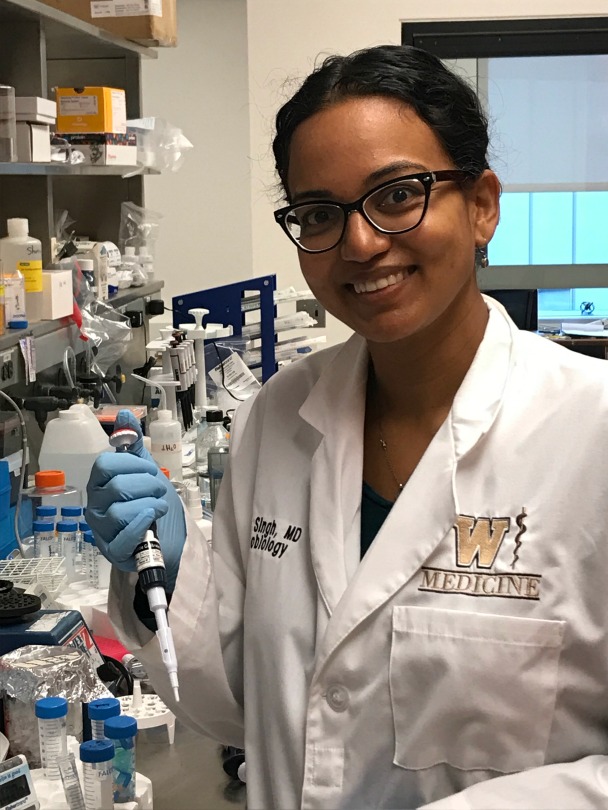
Dr. Sharon Singh currently works as a clinician, researcher, and associate professor at University of Michigan, C.S. Mott Children’s Hospital.
At the heart of it, Dr. Sharon Singh is a problem solver and for the last decade, the pediatric hematologist-oncologist has been working on the problem of childhood cancer. But she knows that the big problem of kids’ cancer can’t be solved only at the bedside of a patient – problem solvers like her need to be in the lab too.
And that is exactly what Dr. Singh is doing, thanks to a St. Baldrick’s grant given almost 20 years ago.
This New Tool Could Mean Better Health For Childhood Cancer Survivors
For childhood cancer survivors, treatment helps them to live, but often that survival comes at a cost. But what are these costs? And how big is the problem? That’s what St. Baldrick’s Fellow Dr. Nickhill Bhakta wanted to figure out. And as it turns out, that data could be a lifesaver.
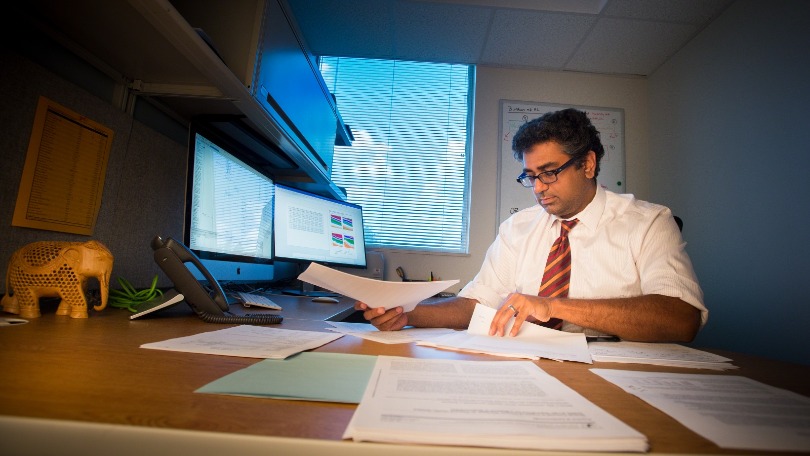
St. Baldrick’s Fellow Dr. Nickhill Bhakta works at his desk in St. Jude Children’s Research Hospital. With a portion of the grant supported by the St. Baldrick’s Friends for Hope Fund, he developed a special statistical tool to help capture the true volume and complexity of chronic health conditions faced by childhood cancer survivors because of the long-term consequences of their treatment — something that hadn’t been done before. Photos courtesy of St. Jude Children’s Research Hospital
What Is Medulloblastoma?
Dr. Sayour and Dr. Petrosiute are both St. Baldrick’s Scholars. This blog was written by Dr. Petrosiute in May 2014 and updated in April 2020 by Dr. Sayour.
What is medulloblastoma?
Medulloblastoma is the most common malignant brain tumor in children. It originates in the back part of the brain called the cerebellum. In up to 1/3 of cases, it can spread to other parts of the brain and spinal cord. Most cases are diagnosed before age 10.
Announcing the Class of 2020: St. Baldrick’s Fellows and Summer Fellows
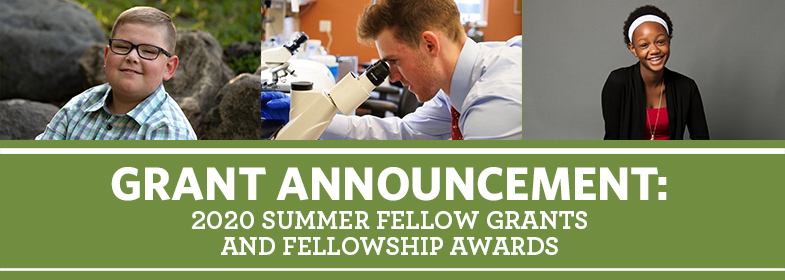
St. Baldrick’s donors play a key role in making new and better treatments possible for childhood cancer. One of the most important ways to make life-saving research possible — not only today but for decades to come — is to fund the training of the next generation of childhood cancer researchers.
That’s why we’re excited to announce today a bright and shiny new set of “next generation” grants.
Meet Dr. Elliot Stieglitz
St. Baldrick’s Fellow Dr. Elliot Stieglitz is a big reader, but not in the way that you might think. Over three years, he read the DNA of one hundred children with JMML, a rare leukemia, and he discovered something major. Read on to learn how his discovery could lead to better treatments for kids with this rare disease.
RESEARCH DEVELOPMENT: Dr. Elliot Stieglitz has brought his St. Baldrick’s-funded research to a Phase 2 clinical trial for kids with relapsed JMML. In this trial, which is first of its kind in the United States, researchers will be testing whether an oral targeted medication used in the treatment of melanoma in adults slows or even kills leukemia cells in kids with persistent JMML. In addition, Dr. Stieglitz developed a test that predicts which JMML patients have the best prognosis and therefore need less intense therapy. He’s now in the process of establishing a clinical test that will eventually be available to patients. This test will help kids get just the treatment they need and avoid damaging long-term effects from harsh therapies. Keep up the great work, Dr. Stieglitz!
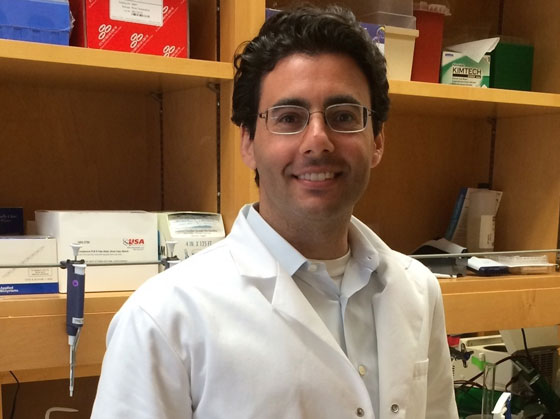
For St. Baldrick’s Fellow Dr. Elliot Stieglitz, being a pediatric oncologist is the perfect blend of emotional satisfaction and intellectual stimulation.
His heart is with the kids and their families, guiding them through the toughest time in their lives. His head is in the lab, trying to find better treatments for childhood cancer.
Teaching Good Cells to ‘See’ Cancer: Researcher Uses CAR T Cells to Help Kids Like Zach [VIDEO]
From CAR T cell therapy in May to a bone marrow transplant in June, over the past few weeks we’ve been following the tremendous journey of Honored Kid Zach Swart. Now we bring you another angle — a closer look at the St. Baldrick’s-funded research that has changed Zach’s life.
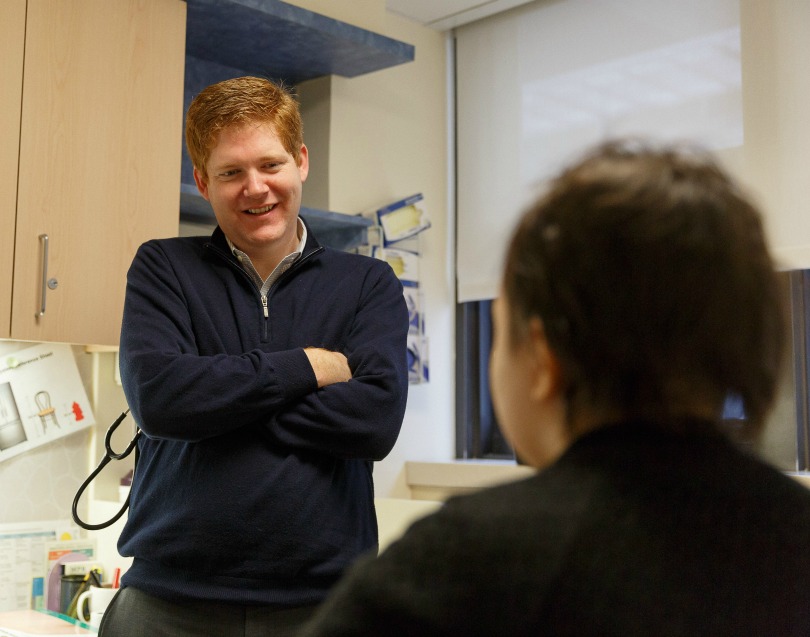
St. Baldrick’s researcher Dr. Kevin Curran meets with a patient at Memorial Sloan Kettering Cancer Center.
A couple months ago, Zach Swart went through yet another medical procedure; one more to add to an already substantial history of biopsies and blood draws.
But this procedure was different than a typical needle poke.
St. Baldrick’s Fellow Studies Promising Treatment for High-Grade Gliomas
When St. Baldrick’s Fellow Dr. Adam Green learned about high-grade gliomas and met kids diagnosed with the brain tumors, he knew he had to help. And today he’s doing just that. Read on for more about Dr. Green, his exciting research, and how St. Baldrick’s helped him make it happen.
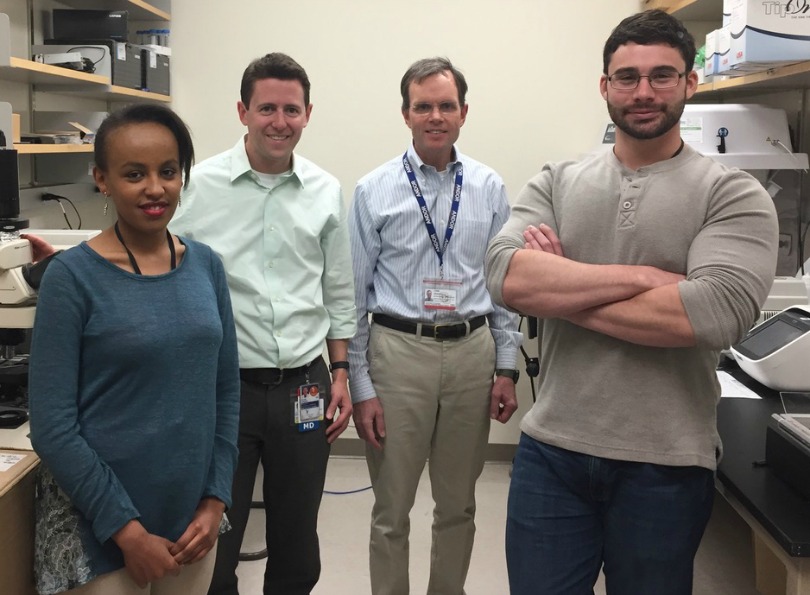
Dr. Adam Green in his lab at the University of Colorado with his lab members, from left to right: Rakeb Lemma, Dr. Green, John DeSisto and Patrick Flannery. Dr. Green’s research is funded in part by the Luke’s Army Pediatric Cancer Research Fund, a St. Baldrick’s Hero Fund created in memory of Luke Ungerer, a little boy who died of brain cancer.
Dr. Adam Green distinctly remembers the first time he gave a family the news that their child had an aggressive, fatal brain tumor. It was an experience that’s hard to forget.
Kids Are Not Little Adults: Researcher Studies Differences in AML Across Age Groups
Kids are special, and that’s why they need treatments made just for them. St. Baldrick’s Fellow Dr. Heather Schuback agrees. She’s looking at the very building blocks of acute myeloid leukemia cells to spot differences that could help kids get the targeted therapy they need.
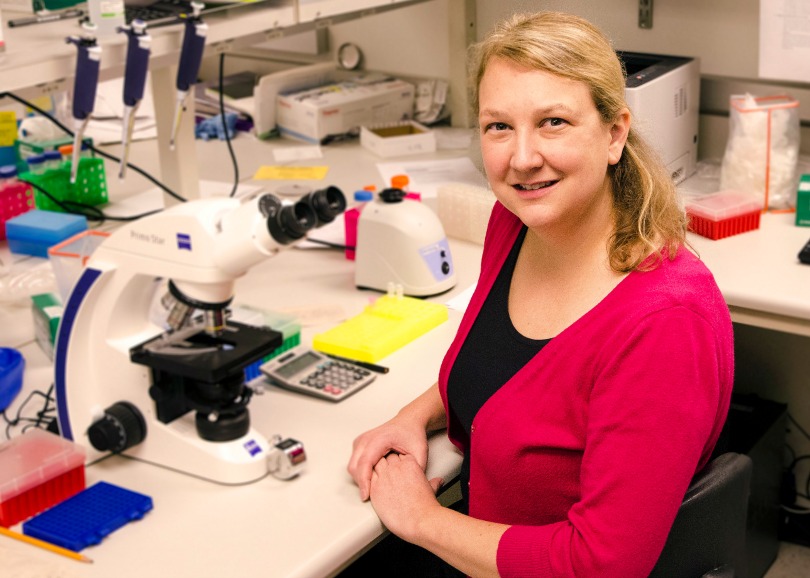
St. Baldrick’s Fellow Dr. Heather Schuback works in the lab at Fred Hutchinson Cancer Research Center in Seattle, Washington.
Kids are not just little adults, says St. Baldrick’s Fellow Dr. Heather Schuback.
That means their cancers aren’t just smaller, younger versions of adult cancers. They are fundamentally different.
Dr. Schuback should know. Her St. Baldrick’s-funded research is looking at how changes in the DNA of tumor cells can predict who will do well during treatment and who won’t. This information could help doctors tailor therapies from the start, getting kids just the right amount of treatment to kill the cancer, while limiting late-effects.
But these differences aren’t limited to which kids will respond well to treatment and which won’t. It’s bigger than that.
St. Baldrick’s Researcher Discovers New Way to Detect Bone Cancer
St. Baldrick’s Fellow Dr. Wendy Rhoades has developed a new tool that could save lives — a blood test that can detect whether a patient has bone cancer. Read on for more about her incredible work and how it could help kids with cancer.
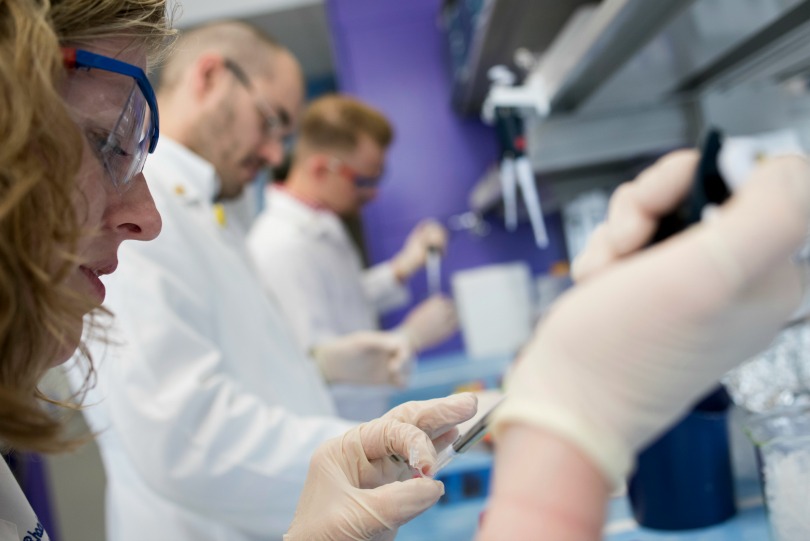
Dr. Wendy Rhoades works in the lab at Texas Children’s Hospital.
What if a simple blood test could detect childhood cancer?
That’s exactly what Dr. Wendy Rhoades is looking into with her St. Baldrick’s-funded research.
Pediatric Cancer Research Facts: A Decade of Successes [INFOGRAPHIC]
Kids are special, and childhood cancers are different than adult cancers. That’s why we’re funding research to find new therapies and cures just for kids.
We asked our researchers, “In the last 10 years, what’s been the greatest achievement in the field of pediatric cancer research?”
Here’s what they had to say.
Older Posts »


 SBF
Tweets »
SBF
Tweets »